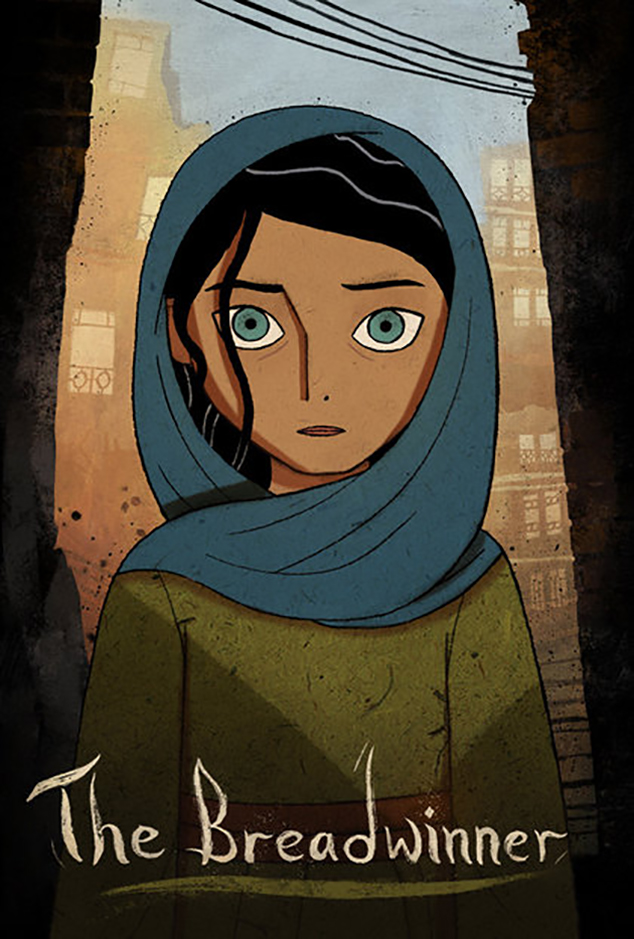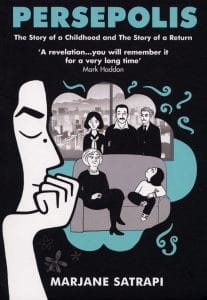
We’ve talked at length the past few days about how good The Breadwinner is, and how effective the story of Parvana is in its portrayal of the plight of many, if not most, Middle Eastern girls and women. However, as I was watching it, I couldn’t help but draw some parallels between it and another movie with similar subject matter, and that in turn got me to thinking about animation as a vehicle for these kinds of stories.
A few years ago, I took an art history class that, for a few weeks, focused on graphic novels. One of the books that our professor chose was called Persepolis. I later found out that that novel had been turned into a film by the artist who had written it, Marjane Satrapi, an Iranian who had grown up in the Middle East during the Iranian Revolution

Persepolis, its sequel, and the animated film based on the two, were an autobiographical look at Marjane’s life, a great deal of which took place in the Middle East, specifically Iran. While the story is vastly different than The Breadwinner, taking place in a completely different country, in a completely different time, and following completely different people, both films highlight aspects of that part of the world and shed light on a very recent history that I’m willing to bet is almost entirely unknown to a lot of Western culture.
Most Americans are pretty sheltered when it comes to the affairs of other countries, especially ones in the Middle East. I’m sure that this can probably be said for other countries as well, but as an American, I will sometimes have moments when I am struck by how little I know about so many other countries, especially ones that have been deemed ‘third world.’
When I first read Persepolis, I was absolutely shocked to learn how progressive Iran had been in the 70’s. I couldn’t believe the majority of women were not wearing burkas, hijabs, or other head coverings. I don’t mean this to be indicative of all conservatives, but, at least where I grew up, in very conservative rural Iowa, it was just common knowledge that every Middle Eastern country was full of Muslims who happily wore their burkas and blew themselves up for Allah. I just assumed that it had been this way for a millennia, and I had no idea the extremists we saw on TV were a rather recent development in a very long history.
I was never told differently, and it never once crossed my mind that there might be people living there who were not like the ones on the news. I never thought that there might be people there who hated what their countries had become, because I didn’t know that their countries had once been anything different. I didn’t know that in some parts of the Middle East they had once known an almost western-like lifestyle.

I had no idea that they listened to music like The Bee Gees, ABBA, or Michael Jackson, that they watched movies, went to restaurants, wore suits, ties, and dresses, and even had parties. The world depicted in The Breadwinner, (early 2000’s Afghanistan) was basically how I pictured the entire Middle East: a war-torn land of deserts, mud brick houses, and poverty.
Persepolis opened my eyes to a world I had never known existed, to a people who I had no idea were living under a repressive regime, dictated by a hateful, extremist version of their own religion. I was under the impression that for the people on the news, blowing themselves up and killing people to get into heaven WAS their religion.
Stories like The Breadwinner and Persepolis, help to shine a light on a culture, on cultures, that we in the West know little about. They humanize the people in those countries and show us things about them that maybe we didn’t know before. Maybe I was just incredibly sheltered, and maybe lots of other people knew more about the history of countries like Iran and Afghanistan than I did, but I doubt that’s the case, and I’m fairly certain that I am far from the minority.
Movies like The Breadwinner are pretty rare in the US, but I really wish they weren’t. The medium of animation is the perfect vehicle for teaching people about another culture. It’s one thing to read a dry history book with a small handful of pictures, and hard-to-digest blocks of text, and it’s another to watch the story of a young girl bring the history of her people to life.

The small stories at the beginning of The Breadwinner that Parvana’s father tells her of his childhood did more to educate me on Afghanistan’s history than literally anything that I got by word of mouth as a kid, or that I saw on the nightly news on TV. In a way, I feel kind of sad that it took watching an animated movie as an adult to teach me some of this history, but disregarding how long it took me to learn it, the fact that animation was the vehicle for that history is actually kind of inspiring and says a great deal about the effectiveness of the medium’s teaching capabilities.
The Breadwinner is going to be officially released on the day that this post goes up, and I really hope it’s successful. Not just because it’s something different in the world of animation, though that is a huge positive, but because I want more people to know more about the culture depicted and what is really happening in that part of the world.
I also just want more movies like this to be made, period. The number of countries that have been depicted faithfully in a film like this are minuscule to say the least, but I really hope that can change. Not just because I want to learn more about other parts of the world, but because I want more people to get a broader understanding of the world as a whole.
Too often we tend to shelter ourselves in our own little bubbles, and we can lose sight of the fact that there is so much going on in the world that we don’t know or could ever hope to know. But I’m hoping that movies like The Breadwinner can help to change that, even if it’s just in the smallest of ways.
Has a movie ever surprised you, teaching you something you never knew you never knew? What do you think of the teaching power of animation?
Edited by: Kelly Conley






